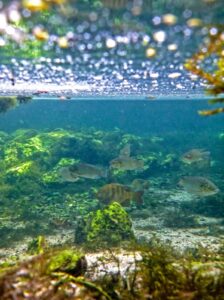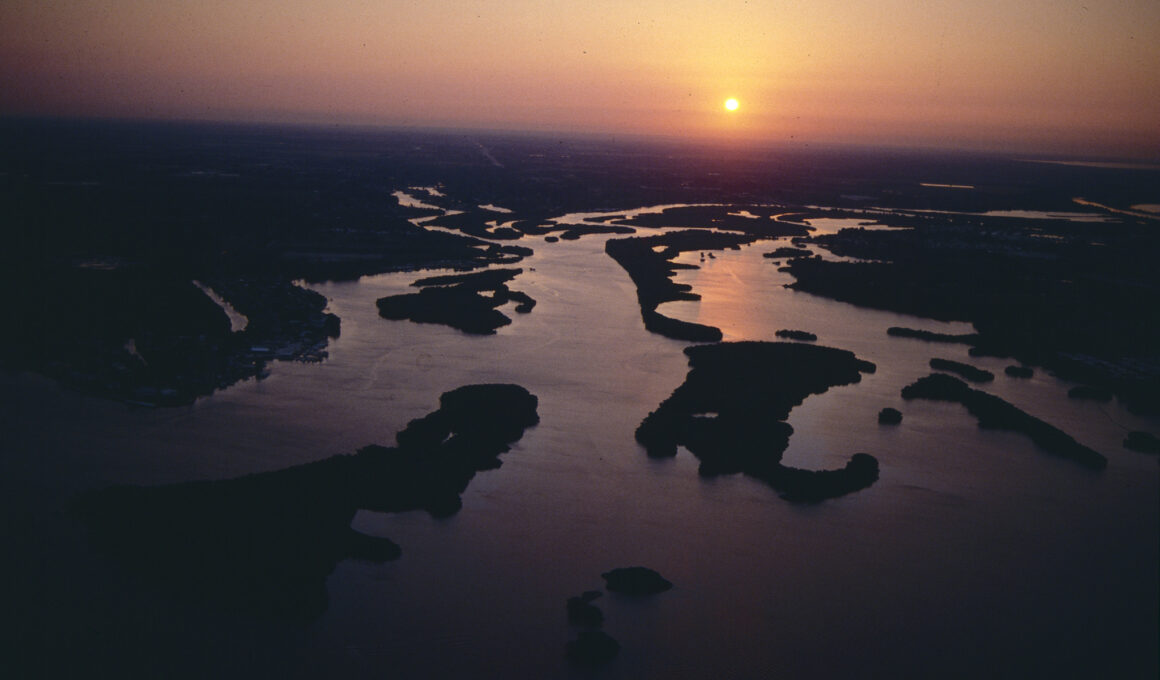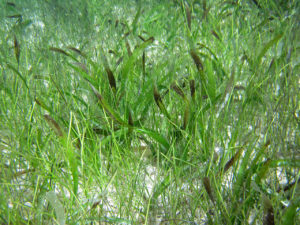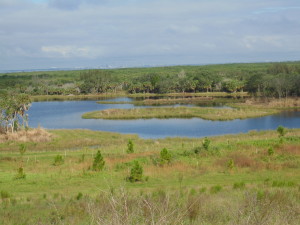
First the good news: Water quality across Tampa Bay is meeting or exceeding targets for clarity, and some critical habitats – including oyster bars, mangroves, and coastal uplands – are likely to meet the aggressive goals set for 2030.
Then the bad news: Seagrass, the single most important habitat in the estuary and the “elephant in the room,” isn’t on the list of habitats expected to meet their targets. Bay managers don’t expect it to rebound significantly but they do see a glimmer of hope. “We saw a slight increase in the 2023 transect data,” said Marcus Beck, program scientist at the Tampa Bay Estuary Program (TBEP). “I don’t want to say that seagrasses are on the road to recovery, but it is encouraging news.”
The documented loss of 11,518 acres of seagrasses in 2022, which continues a trend that began in 2016 from the high of 41,655 acres, comes from aerial images collected every other year by the Southwest Florida Water Management District (SWFWMD). The images cover all areas where seagrasses are expected to survive and the interpretations of those images are considered the official acreage estimate. SWFWMD is currently acquiring the latest imagery, with the 2024 report expected in early 2025.
Seagrass transects, on the other hand, are monitored every summer at 62 locations across the bay in an effort led by TBEP. Trained snorkelers document the seagrass and macroalgae along each transect, including details that can’t be compiled from the aerial surveys such as species of seagrass, stem density and a description of macroalgae.
Most of those gains seen in the transects were shoal grass, Halodule wrightii, which is typically the species most likely to recur first, although its growth is more dynamic than other species in the bay, often responding rapidly to changing conditions. Gains were also noted for Ruppia maritima, a seagrass species that prefers lower salinity.
Seagrasses need clear water to thrive
For more than 30 years, the paradigm for restoring Tampa Bay has focused on attaining water clear enough for sunlight to reach the bay bottom where seagrasses need it to survive. High levels of nutrients, typically from stormwater and wastewater, fuel the growth of algae that block sunlight.
Baywide, water quality goals have been met for the past two years, Beck said. Long-term improvements are directly related to reductions in point sources of nutrient pollution over the last 30 years, particularly wastewater treatment plants, which have been significantly upgraded.
The short-term improvement seen in 2023 is likely tied to one of the driest summers on record. “Less rain means less stormwater which results in lower levels of nutrients from stormwater entering Tampa Bay,” he said. “We expect some annual variability in nutrient loading, but we can’t use drought as a management strategy.”
Managers are still trying to pinpoint why seagrasses have not recovered even as water quality goals are being met. An assimilative capacity study that looks at Old Tampa Bay – where the losses have largely been concentrated – will help assess why seagrass losses have been so significant in the bay section, even when water quality targets are being met. The results of the study will help determine what additional management actions might be needed in the bay segment known as “the problem child.”
Scientists also are beginning to track temperatures and salinity more closely to see if they have any impact on seagrass growth and to question the potential role of fungus and bacteria.
Habitat Report Cards Updated
Along with seagrasses, TBEP tracks the protection, acquisition, restoration or enhancement of 13 other critical habitats in the bay and in its watershed, with clear goals and specific deadlines. The 2023 report card details 71 projects completed by 21 partners covering 32,011 acres and 1.66 miles of shoreline. But unlike the simple “red-yellow-green” report card used for water quality, this report includes four distinct marks based on restoration targets for 2030:
- Red: the target isn’t met and the trend doesn’t indicate that it will happen by 2030. These include seagrasses, salt marshes and forested freshwater wetlands.
- Yellow: target is met but restoration is trending below the 2030 goal. Only one habitat – native uplands – currently meets that criteria.
- Light green: target isn’t met but the trend indicates that it will by 2030. For 2023, coastal uplands meet that criteria.
- Dark green: the target is met and trending above the 2030 target. Those habitats include oyster bars, mangrove forests, salt barrens and non-forested freshwater wetlands.
A primary goal with the habitat report card is to share information about habitat restoration, enhancement and land acquisition with partners across the region, notes Kerry Flaherty Walia, TBEP restoration ecologist. “The charts let us see what’s changing and where we should prioritize our efforts. We’re all doing a lot of work but the habitats in the red are areas we really need to focus on.” the red are areas we really need to focus on.”


